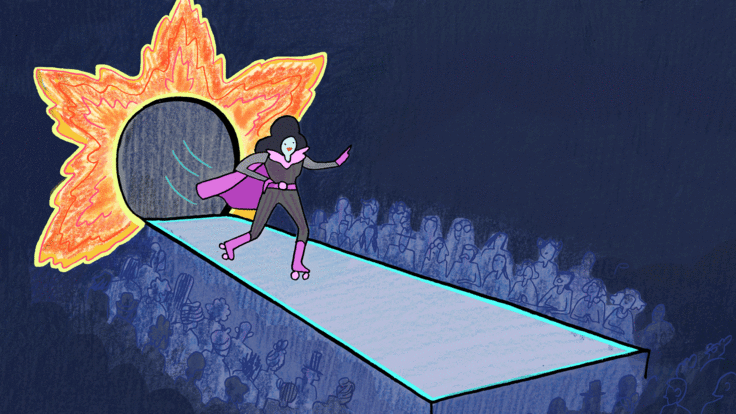This story first appeared on July 25 in Fermilab Today.
A new result from Fermilab’s DZero experiment was announced Saturday at the European Physical Society conference in Grenoble, France, studying the production of the top quark and its antimatter counterpart, the antitop quark, in proton-antiproton collisions. This result, called top quark forward and backward asymmetry, shows that the top quark travels more often in the direction of the incoming proton, whereas the anti-top quark follows the direction of the antiproton. This large asymmetry, which was unexpected, is consistent with a result reported earlier in the year and recently updated by Fermilab’s CDF collaboration.

A result from DZero, announced Saturday at the European Physical Society conference, addresses the question of whether the top or the antitop quark is produced preferentially in the direction of the incoming proton.
The result means that there is a discrepancy between the data and a theory of the Standard Model that predicts the Tevatron detectors should see no such preference of the top and anti-op directions. Similar asymmetries observed in the production of muon and antimuon pairs about 30 years ago were a first step in the discovery of the Z boson.
When discrepancies such as this exist, it can indicate one of several things: an anomaly in the data, new physics at work or that the theories may need adjustment. In this case, DZero collaborators believe that the theory needs to be amended.
“The central value of the result is consistent with what CDF sees. The excess seems to be higher than the theory predicts. But we’ve taken our analysis one step further to give a possible interpretation of what is happening,” said Stefan Soldner-Rembold, DZero experiment co-spokesperson.
New physics is an attractive idea, explained DZero co-spokesperson Dmitri Denisov, but before you can look at that, you have to rule out other things first.
Finding that data doesn’t always fit with the prominent theory is something that physicists occasionally experience. Denisov explained that Tevatron physicists are running into this situation now because they have a larger data set, which enables them to look at more complex phenomena, which are more challenging to analyze.
In this case, DZero’s challenging analysis used 5.4 inverse femtobarns of data to measure the symmetry of how top quarks come out of collisions, either in the direction the beam of protons is moving (forward) or the direction of the antiproton beam (backward). Their result found a (19.6±6.5) percent asymmetry, similar to the (15.8±7.5) percent asymmetry CDF reported in January. The result is at a 2.4 sigma level, where a 3 sigma result is statistically relevant. CDF also announced over the weekend an update to their result using a different decay channel. The CDF collaboration’s updated result is (20.1±6.7) percent at about a 3 sigma level.
Douglas Orbaker, a DZero collaborator from the University of Rochester, will present the DZero result at a special Wine and Cheese lecture at 2:30 p.m. Monday, July 25, in One West. The talk will be available via streaming video.






